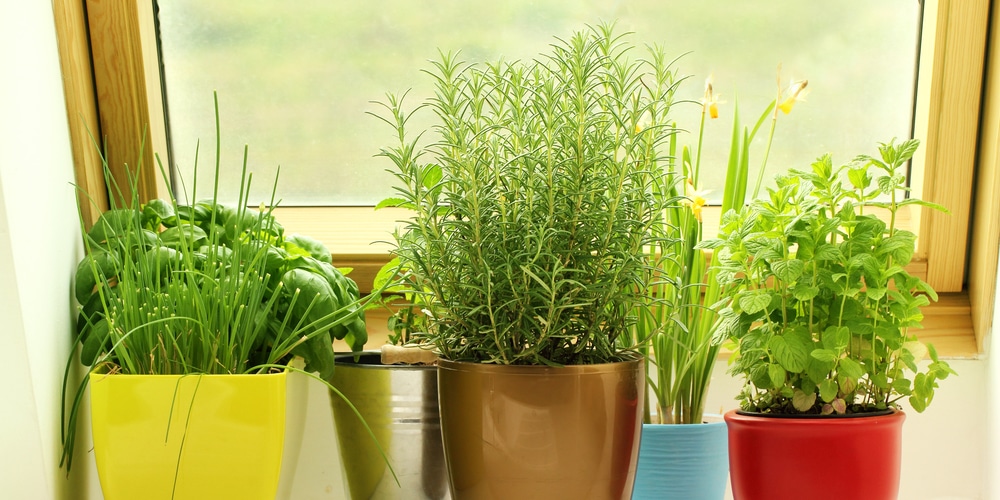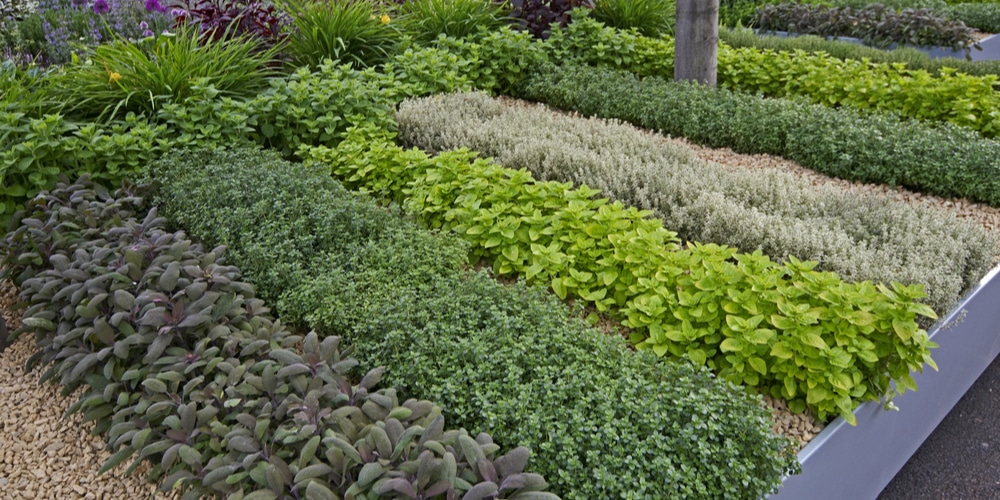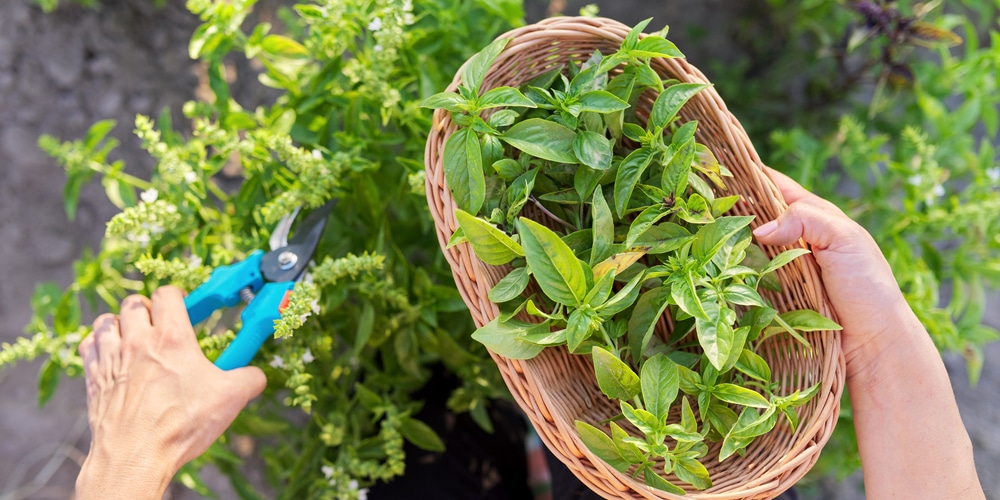Fresh herbs taste great and can be added to various dishes such as salads and sauces. They are easy to grow and plant together. They don’t take up too much space. Herbs can be planted side by side and grown indoors on a sunny windowsill or outside in your yard.
When growing herbs, there are a few things to consider; some herbs can be planted next to each other, such as thyme, marjoram, and oregano. These herbs require the same growing conditions and care. It’s best to avoid planting mint near other herbs as it can be very invasive and will crowd out other plants. Let’s look at which herbs can be planted together.
Growing Herbs
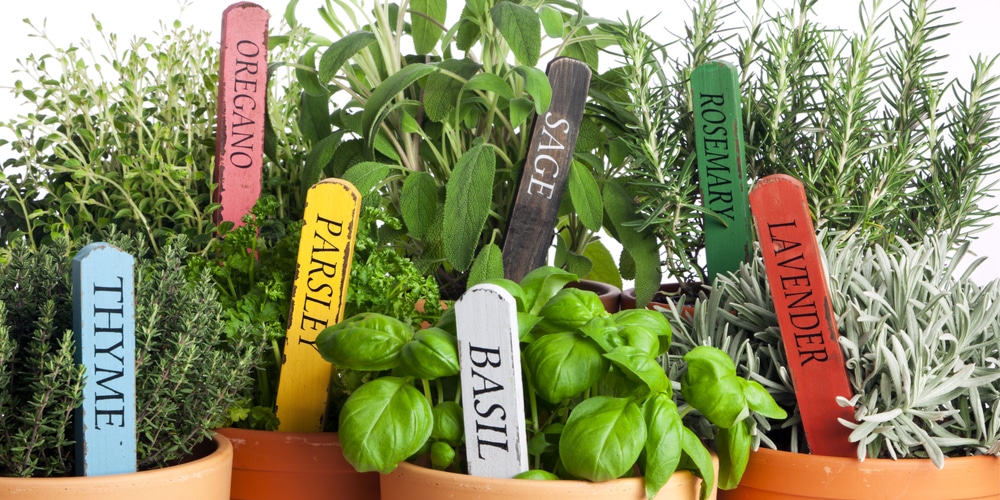
Herbs are plants that are used for seasoning foods, for medical purposes, and have lovely fragrances, which means they are commonly used in the beauty industry. They are also used to create teas and herbal infusions and as ground cover and even hedges. Many herbs, such as lavender, produce beautiful blooms are planted to make the home or yard smell and look nice.
Botanically, herbs are described as being plants with woody stems that die back and become dormant during the winter. There are hundreds of varieties of herbs and spices worldwide, and they can be annuals, biennials, or perennials.
Annual Herbs
When growing annual herbs, you’ll need to plant your seeds together in the early spring. This will allow the seeds to germinate and mature in one growing season. Once the herb reaches about eight inches in height, you can start to harvest its leaves. Examples of annual herbs include cilantro and basil. These herbs will die in the winter, and you’ll need to plant new herbs the following spring.
Perennial Herbs
Most culinary herbs are known as perennials. These types of herbs are long-lasting and can be harvested once they reach 4 to 6 inches tall. They’ll die back slightly in the winter but will continue to grow the following growing season. Mint is an example of a perennial.
Biennial Herbs
Biennial herbs take a couple of years to reach maturity. Herbs that are regarded as biennial include sage and parsley.
Where to Plant Herbs Together: Outdoors vs. Indoors
Herbs are versatile plants that can be grown either indoors or outdoors. It often comes down to space as to where you ultimately decide to plant your herbs. If you only have a small yard, you could purchase a herb tower, which would allow you to grow a wider variety of herbs in a small area.
Before planting herbs outside, you should consider the growing conditions and the needs of the plants. Sage likes to be in full sun for much of the day, while chervil requires a shaded area. You should also consider drainage, space, winter protection, and watering needs before deciding where to plant herbs in your yard.
Alternatively, you can grow herbs inside on a windowsill in indirect sunlight. Many herbs create a pleasant aroma that will make your house smell nice. You’ll also have easy access to your herbs while cooking, and if you live in an apartment, you’ll still be able to grow fresh herbs.
It’s worth noting that not all herbs like to grow indoors; some have large root systems and do best outside where they have more space. You’ll also need to ensure that any herbs you grow inside get enough sunlight, as most herbs need at least six hours of sunlight a day to thrive. Herbs such as rosemary, mint, bay, basil, and thyme grow well in indirect sunlight and generally do well whether inside or out.
It’s also a good idea to grow indoor herbs in close proximity to each other as this helps improve humidity and air circulation.
Which Herbs Can You Plant Together?
It’s a good idea to do your research on the type of soil and environment the herbs need. Herbs that require the same amount of water and sunlight can be planted together. Group sage, rosemary, thyme, marjoram, oregano, and lavender together. These are Mediterranean herbs that love sunshine.
Another common herb grouping includes tarragon, basil, and cilantro. Here are some other common types of herb groupings:
Moisture-Loving Herbs

Basil and Parsley grow well in moist soil and require plenty of sunshine. They can happily grow side by side.
Lemon-Scented Herbs

Create a lovely lemon fragrance in your yard by planting lemon thyme and lemon verbena together.
Mints
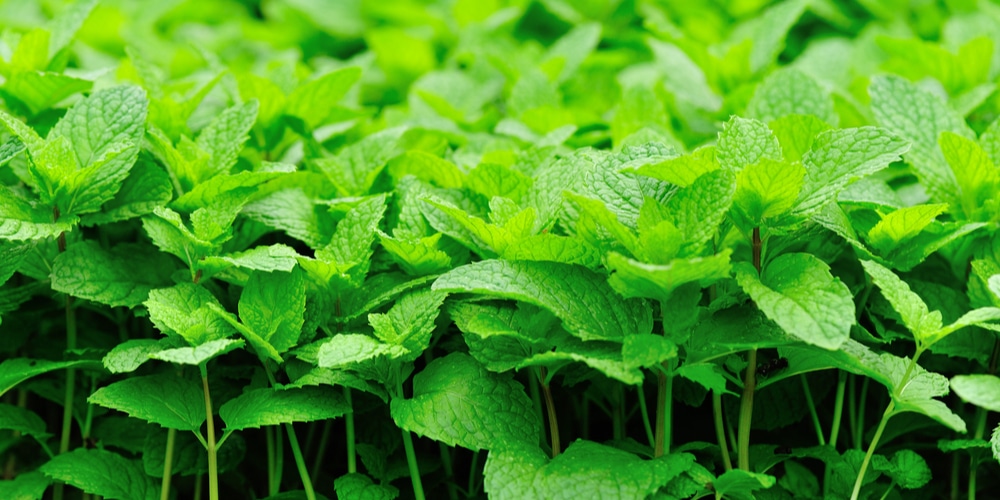
Mint is a very invasive plant. Many gardeners recommend growing it in a container, pot, or window box rather than directly in the ground, to stop it from spreading. Don’t plant mint with other herbs as it could crowd them out.
Mint comes in several varieties, and these can be grown together. Different types of mint can be planted together. Some examples of mint include spearmint, chocolate mint, catmint, orange mint, peppermint, and lemon balm. Make sure your mint plants have enough space to grow.
Harvesting herbs
Many herbs that you plant together can be harvested all season and can be added to salads, sauces, or used to create teas and essential oils. Herbs such as thyme, rosemary, chives, sage, basil, and parsley are fast-growing and can be harvested as you need. It’s best to harvest the herb before noon as the plants will contain more nutrients at this time. You can either nip off a stem or use scissors or a knife.
Don’t harvest more than a ⅓ of the plant as this will lower the plant’s resistance. It’s a good idea to stop harvesting perennial herbs if it’s almost winter.
Planting Herbs with Vegetables
Companion planting involves planting herbs next to vegetables and other plants so that they can benefit each other. Some herbs can be used to repel pests, while others increase the growth rate or improve the flavor of vegetables.
Rosemary

Rosemary is excellent for repelling insects, in particular mosquitoes, silverfish, clothes flies, bean beetle, and carrot flies. This herb makes a great companion plant for carrots, cabbages, and beans as it helps protect them from pests.
Basil
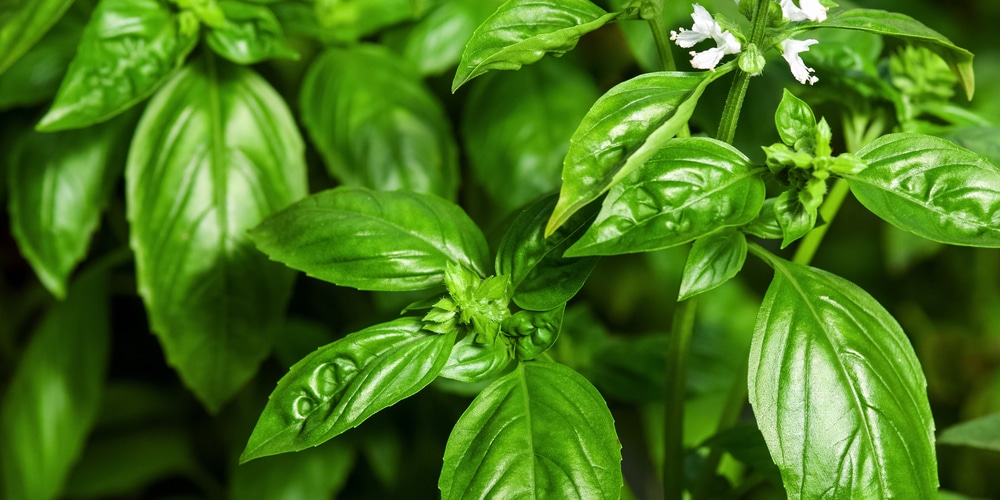
Basil is a great companion plant for tomatoes, asparagus, and peppers. It can help increase plant growth and can even improve the flavor of the fruit. Basil can also be used to repels mosquitoes, aphids, flies, hornworms, and whiteflies from your vegetable patch.
Mint
Mint can improve the health of cabbages and tomatoes plants. The herb also helps to deter cabbage moths and repels ants and fleas.
Thyme
Thyme is a great herb that you can plant together with cabbages, cauliflower, broccoli, or brussels sprouts. It will help plants in the cabbage family from whiteflies and cabbage root flies.
Dill
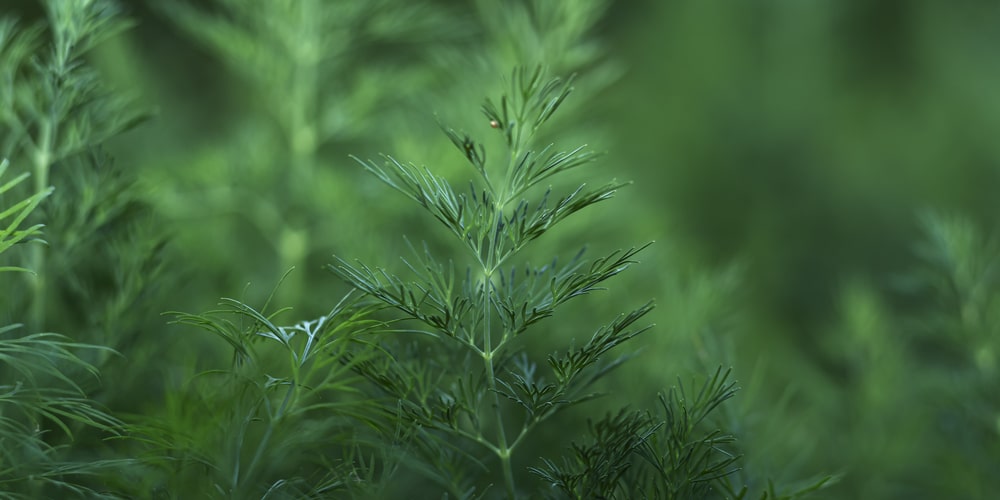
Dill is another herb that can be planted next to your cabbages. It also benefits other vegetables in the cabbage family and can improve tomato growth. Don’t plant dill next to carrots as it can negatively affect them and compete for nutrients in the soil.
Dill helps improve plant growth and also attracts hornworms, which means they won’t destroy other plants. Fresh dill is definitely better than dried dill.
Sage

Sage is a fantastic herb that can be used to repel insects such as carrot flies and can be planted within close proximity to carrots. It’s also a great companion for cabbage as it deters cabbage moths, fleas, and beetles.
Wormwood
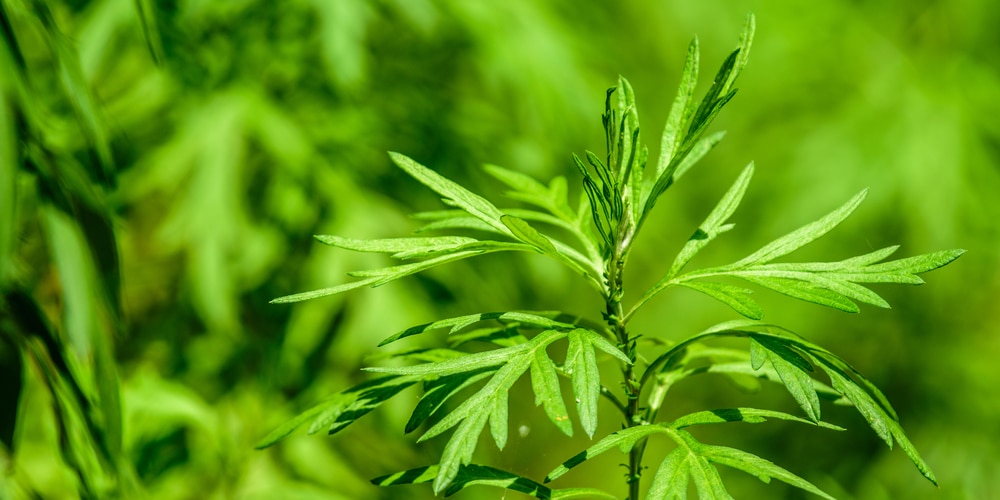
Plant wormwood around the perimeter of your yard or vegetable garden to deter wildlife and other animals such as cats from entering your yard. Pests such as rabbits that are likely to eat your vegetables will stay away if they smell wormwood.
Chamomile

Chamomile is excellent for anyone who suffers from insomnia. The flowers can be used to make a calming tea that will help improve sleep. You can plant camomile next to cabbage and onions as it improves their growth, and many people believe it also enhances their flavors.
Conclusion: You Can Plant Many Herbs Together
Herbs are a very versatile plant that has many uses and medical properties. You can plant herbs indoors or outside and grow them together. They make great companion plants for your vegetables. Similar herbs grow well together, particularly if they have the same soil and water requirements and like the same environment.
